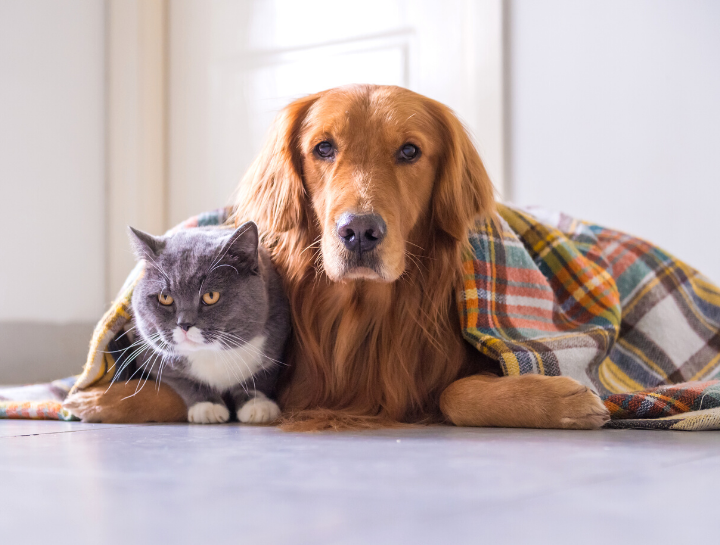Back to Work! Helping Pets Adjust to Change After COVID-19

If you have been sheltering in place for what is starting to feel like an eternity, you are probably going just a little stir crazy. Thankfully, many of us are finally beginning to return to work and maybe even school; and for the first time ever, perhaps, you may even be excited to get back to it.
Our pets feel differently, though.
After all, they have been getting 24/7 love and affection from their humans for a few months now – and they probably don’t hate it as much as you might think.
The team at Advantage Veterinary Center has actually seen an uptick of separation anxiety in our pet patients recently, meaning if your pet is struggling with your absence, they are not alone.
Recognizing the signs of pet separation anxiety
In a perfect world, our pets would be able to express how they are feeling in our language, not theirs. Since the signs and signals of distress and upset are different in cats, dogs, and other household pets, we must learn to spot the behaviors they do use to communicate their stress and fear to you. Think of it as learning a new language…
Be mindful to these pet behaviors as signs of emotional distress and separation anxiety:
- Clingingness
- Shaking/trembling
- Lack of appetite
- Restlessness
- Diarrhea
- Destructive behavior like chewing and digging
- Attempts to escape
- Chronic barking/vocalization
- Hiding
Anxiety, phobia, and depression are all issues that some pets are diagnosed with. If your pet is prone to stress and fear, or has had issues with hypervigilance and “static cling” to you, they are likely to develop separation anxiety without intervention. Pets who have not been socialized or have had trauma are also more susceptible.
Tips for Helping Pets Adjust to Change
If your pet is experiencing behavioral issues and fear, or any of the symptoms noted above, they should be seen and examined for the root cause of their behavior. Many of your pet’s stress indicators can also be caused by pain or a medical condition, so it’s best to talk to your vet.
If your pet is given a clean bill of health (which is the hope), we can then address separation anxiety and how to help them through it.
Here are some ideas to get you started. Keep in mind that many of these suggestions may apply to you, too.
- Start their new routine as soon as possible. If you plan to have an 8-hour workday (and then some), start leaving your pet at home for a few hours here and there, increasing the amount of time home alone, over time. Start this routine before you go back to work if you can, as it can take a few weeks before they fully adjust.
- Use many forms of enrichment. Who wants to spend their time home alone with nothing to do? Not your pets, that’s for sure. Be sure to leave a little fun and enrichment around the house, such as treat-dispensing puzzles, Kong toys, and something safe to gnaw on.
- Keep it positive. Punishing your pet for misbehavior while home alone can reinforce their fear of being alone. Instead, praise them for what they’ve done well and let the rest go. If the behaviors don’t decrease with time, talk to your vet.
- Say Hello, then give them some space. Your pet will undoubtedly greet you with over-zealous enthusiasm when you get home. Say hello, but then focus on settling in and getting on with it, instead of going as crazy as they are. This business-as-usual behavior allows them to feel like solo time isn’t anything to be fearful of and that all is well.
- Seek professional help! Doggie daycares and dog walkers can help break up the isolation (and boredom) of the day. Whether it’s every day or as an occasional treat, especially on a longer than usual day, getting out of the house is good for everyone.
- Find something to take the edge off. Some pets respond well to anxiety-reducing supplements, pheromone and calming sprays, and other special pet treats at the end of the day. Don’t over-indulge your pet, but offering a special reward for making it through the day can help them look forward to the next.
If your pet is experiencing behavioral challenges as a result of the pandemic, please call us. We can provide additional recommendations to encourage better well-being for your best friend.
